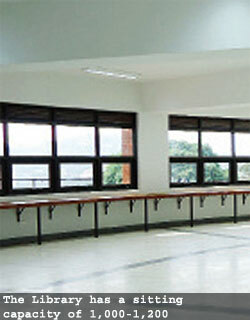MUBS opens magnificent library
ACCESS to higher education in Uganda has been improving over the past two decades, with the number of universities increasing to over 20 from one in 1986.
 ACCESS to higher education in Uganda has been improving over the past two decades, with the number of universities increasing to over 20 from one in 1986.
ACCESS to higher education in Uganda has been improving over the past two decades, with the number of universities increasing to over 20 from one in 1986.
Student enrollment in universities and tertiary institutions has also shot to over 200,000, thanks to the liberalisation of the sector.
But the quality of education has remained a big challenge in Uganda. A number of employers have been complaining about the inadequate practical skills and narrow understanding of issues among the thousands of graduates universities churn out every year. Little wonder, the unemployment rate has remained high, standing at over 60% of the students who graduate every year.
Before the business school starts on a new journey as an independent university, Makerere University Business School (MUBS) has begun launching strategies to boost its academic standards and quality of graduates. Aware of the significance of a library in enhancing academic standards, MUBS has put up a magnificent and spacious library.
The sh11b five-storeyed facility, which is being commissioned today, stands grandly atop Nakawa Hill at the MUBS main campus. Located at the north end of the campus and overlooking dozens of dilapidated structures, the library is indeed a marvel.
With a sitting capacity of 1,000 to 1,200, it is arguably one of the largest university libraries in the country.
Florence Lunkuse, the MUBS librarian, commends the Government for funding the project, saying the outcomes will be worth the sh11b investment. “The Library is the heart of an academic institution. As a focal point for teaching, learning, and research, it is expected to provide standard information resources and enhance our academic standards,” Lunkuse explains.
Originally established as a College of Commerce, with a capacity of 1,000 students, MUBS has grown into a 12,000 student institution, which necessitated the need to have a larger library.
The original library had an area of about 400 square metres covering both reading and storage space, a capacity of 350 students. “This facility could no longer handle the ever growing student numbers that require its services hence the construction of the new library,” Lunkuse explained.
The small space and also barred the administration from buying more books, limiting their physical stock to about 65,000 volumes. Over the years, MUBS has had a student-book ratio of 1:5, which is far below the NCHE recommendation of 1:40. “The reading space has been too small. Students have been reading from outside and whenever it rained, they would just enter and stand in the library corridors,” said Faith Acelai, the MUBS library administrator. “Even the storage space has been small. Most materials have not been read because they’re heaped up and almost inaccessible. Online journals have not been utilised due to lack of enough computers and space,” she revealed.
The inadequate library space has been one of the major setbacks for MUBS to achieve most of its goals. However, officials are optimistic that the new library will go a long way in achieving the institution’s vision of being the benchmark for business and management education, research and training in the region. “In terms of capacity, this magnificent new library will accommodate more than 10 times the current one,” Lunkuse noted.
The new structure brings several features to the library. They include new state-of-the-art digital rooms strategically partitioned at all the five floors. The rooms will have about 40 computers each to enable students search online journals. According to Lunkuse, MUBS subscribes to over 40 online databases, about 15 of which are business journals.